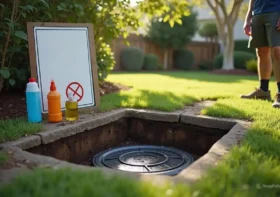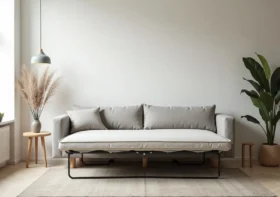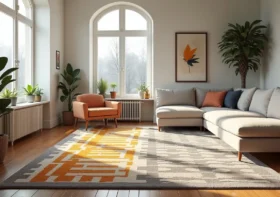What is a Pergola? The Differences Between Pergolas, Gazebos, and Other Outdoor Structures

In landscape design, as in many areas of our lives, there are endless modifications, new tastes, and fashion trends. Unsurprisingly, most owners of private houses, summer cottages, and garden plots try to design their outdoor spaces with maximum convenience, comfort, and aesthetics.
In this publication, we will consider such an element of landscape design as a pergola. Initially, a pergola was used to support the growth of climbing plants, most often grapes. Nowadays, this arched structure made of wood, aluminum, or vinyl is used as a canopy, gazebo, and simply a decorative element of the local area.
Contents
What is a Pergola?
A pergola is an architectural element that produces partially shaded outdoor areas. It consists of support posts, top and horizontal beams, and louvers or slats that may be parallel or crosswise. Pergolas block the sun but still allow some light and air to pass through.
The origins of pergolas date back to ancient Rome, where they were utilized in mansion gardens to sustain climbing plants and create recreational amenities. Pergolas became popular in Mediterranean architecture and later spread worldwide as a landscape design feature.
Modern pergolas are made from various materials. Wood is the most traditional — a natural, warm material that easily blends into the garden surroundings. Aluminum is rust-resistant, light, and strong. Vinyl is an affordable, low-maintenance, and practical option.
Functionally, a pergola is a recreation space, sun shelter, and spot for plants, particularly climbing plants. It can be fixed to a building or independent. Decoratively, a pergola provides expressiveness to the location, assists in dividing up the space, and produces an intimate environment. It is a frequent base for lighting, curtains, or awnings, adding aesthetic and functional value to this facility.

Types of Pergolas
There are several different types of pergolas that also differ in terms of design, function, and mounting. One of the most common categorization schemes is location: freestanding pergolas are mounted alone, e.g., in the garden or at the pool, while attached pergolas are mounted close to the building, as part of the balcony or patio. Attached structures are especially popular in areas with limited space.
Modern pergolas also differ in the type of a roof. A very popular one is the aluminum louvered pergola. The roof consists of adjustable slats (blinds), which are manually or motor-operated to adjust as desired. These models allow you to control the level of sunlight and airflow, providing comfort during any time of the day.
Some models come with foldable covers, which offer more flexibility. Such roofs can be made of slats or fabric and are controlled by a remote.
Additional accessories make pergolas convenient and attractive. For example, mounted lighting makes it possible to use them in the evening, and privacy systems such as side panels, curtains, or screens block wind and unwanted attention. A pergola is a territorial architectural configuration and a multifunctional piece of furniture for relaxation outdoor recreation.
Pergola vs. Gazebo
Both styles allow you to create a nice outdoor recreation area but are different in design and use.
What is a key difference between a pergola and a gazebo?
Pergola:
- Open structure without load-bearing walls.
- Lightweight frame made of wood or metal.
- The roof consists of crossbars or movable slats.
- Possibility of using external roller blinds for protection from the sun.
Gazebo:
- Closed or partially closed structure.
- Load-bearing walls or solid partitions.
- A solid roof that protects from rain and snow.
- Windows and doors can be installed.
- Purpose and functioning
Pergolas are utilized primarily in the summer. They best protect from the sun, create a fashion element in garden architecture, and support zoning the space. Their mounting often does not require special authorization.
Gazebos are more versatile and can be used year-round. They can be equipped with barbecues, stoves, and other heating equipment; you can enjoy them even in winter. At the same time, their construction requires obtaining permits, especially if it is a capital structure.
- Advantages and disadvantages of either solution
Pergolas look trendy, are simple to install, and do not involve significant capital. However, they lack complete protection from rain, which limits their application.
Gazebos supply essential shelter from stormy weather, so you can enjoy being outdoors regardless of the weather. However, they are more expensive and require regular maintenance and permits.
All of these constructions are used to arrange an open area, but each one has its own characteristics. However, they are more expensive and require regular maintenance and permits.

Pergola vs. Pavilion, Arbor, and Canopy
Each structure is used to arrange an open space but has its own characteristics.
- A pergola is a frame structure with an open or partially closed roof, often made of slats or lamellas. It creates partial shade and is often used to support climbing plants.
- A pavilion is an independent building that has a complete roof covering it and will keep the rain and sun out.
- An arbor is a small ornamental structure with a curved or arched form. It is generally used as a walkway or garden element and sometimes incorporates a bench inside.
- A canopy is a lightweight roof supported by pillars that provides temporary sun or rain shade. It is usually made of fabric or metal.
Functionally, a pergola creates an open and cozy environment, a pavilion completely shields from weather conditions, an arbor beautifies the location, and a canopy provides shelter during transit.
The choice is based on the size and purpose of the site. A small garden requires an arbor or small pergola. A pergola or canopy is ideal on a patio or balcony. By a pool, a pavilion or motorized pergola is great, creating nice shade.
Design & Aesthetic Differences
Each structure — a pergola, a pavilion, an arbor, or a canopy — affects the outside atmosphere in a different way.
A pergola introduces airiness and lightness. Its open roof enables sunlight and shade to pass through and creates a cozy half-shaded area. It would be appropriate for garden furniture, garlands, built-in lighting, and climbing plants such as grapes or clematis.
A pavilion is heavier and more dignified. Its roof provides complete cover so that clusters of dining furniture, sofas, lighting, and even an outdoor kitchen can readily be accommodated.
An arbor is primarily decorative, accentuating the entrance or change of garden areas. It is only appropriate to carry plants, but rarely with furniture.
A canopy is functional and handy, and although its design appears simpler, it is a certainty for protection. It may come with furniture and lighting, but it is less communicative in appearance than a pergola or pavilion.

How to Choose the Right One
To choose the kind of construction to utilize, you need to ask yourself:
- What is the main function of use? Is the recreation area needed only for personal needs or for family and friendly gatherings?
- What size will the structure be? You should proceed from the expected number of guests.
- What is the required seasonality of use? The structure should be closed and insulated if you plan to use it in winter.
- What is the estimated budget? Panoramic glazing and polycarbonate roofing – will significantly increase the cost.
Choosing a building for recreation is an individual process. You need to proceed primarily from your own needs and preferences, relying on each type of structure’s known advantages and disadvantages.
When selecting an architectural theme for your outdoor backyard, it is not merely a question of looks but also of functionality within your area. Both forms determine the mood of the whole recreation area.
If you want to create a sense of openness with shade elements and maintain a visual connection with nature, consider a pergola. A pavilion is a better choice for those who value privacy and complete protection from the weather. An arbor is more of an artistic accent that can highlight the style of the garden or mark an entrance. A canopy works best when ease of use and flexibility in installation are issues.
The final decision lies with your lifestyle, purse, and goals — choose a design that will not only beautify the room but also be a part of your everyday homey environment.



